Overview
Economic downturns, changing market conditions and protecting brand and reputation are just some of the risks keeping executives up at night.
In an increasingly global and connected economy, events in one part of the world can have major consequences in another. For example, U.S.–China trade tensions can have knock-on effects on supply chains across the globe, affecting operations, performance and profitability. The uncertainty surrounding Brexit has thrown both U.K.–EU relations and international trade into confusion. And as technology continues to become integral to everyday life, organizations rush to transform their operations to keep up with consumer demand while protecting their reputation and brand.
“Companies of all sizes are struggling to prioritize their risk management efforts amid so much change and uncertainty,” says Rory Moloney, chief executive officer, Global Risk Consulting, Aon. And, as Aon’s 2019 Global Risk Management Survey shows, the level and speed of change has pushed risk-readiness – the measure of a business’ preparedness to tackle established and emerging risks – to its lowest point in over decade.
As business leaders grapple with these risks, Greg Case, chief executive officer, Aon, highlights the need for the risk management function to become a companywide priority. “This is an opportunity for risk managers to lead an evolution toward truly addressing risk at the enterprise level,” Case says.
IN DEPTH
Macro-economic events such as stock market declines and trade policy disputes are contributing to a growing number of business vulnerabilities. Aon’s 2019 Global Risk Management Survey outlines the top 10 risks business leaders* face – along with possible ways to plan, prepare and mitigate.
1. Economic Slowdown/Slow Recovery
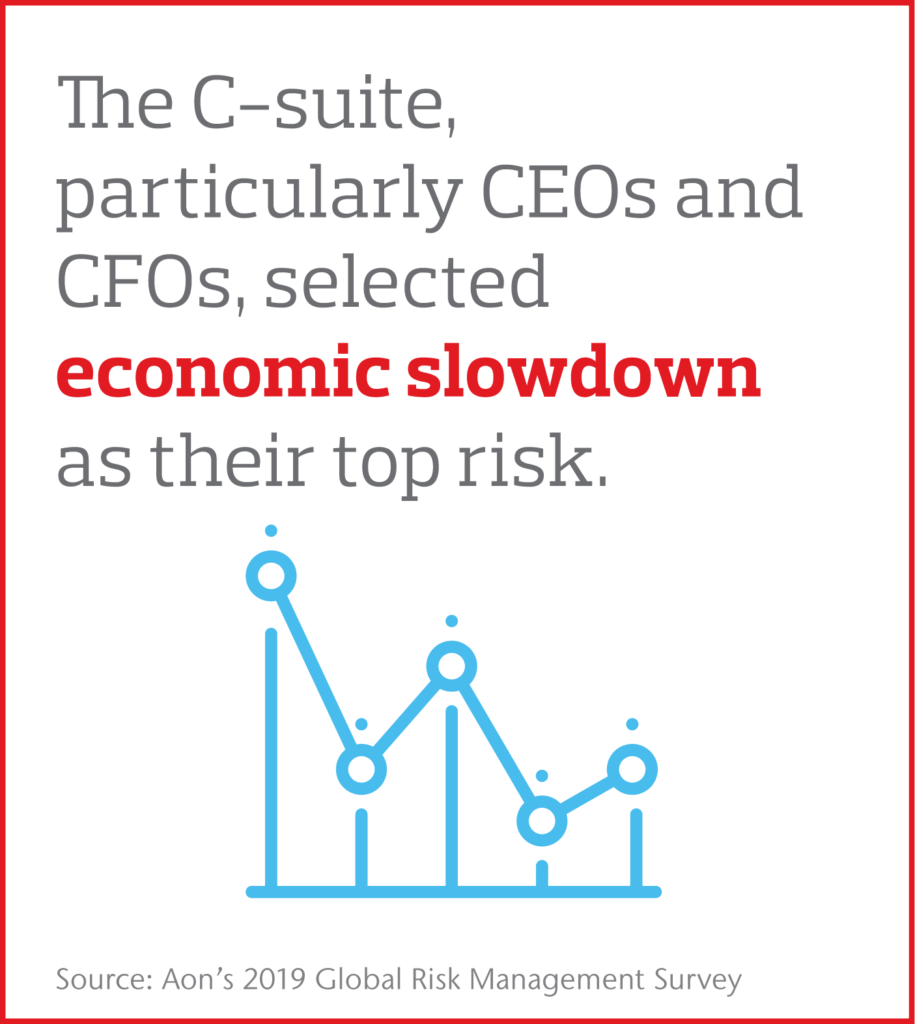
The Risk: Many economists believe a U.S. recession is in the cards by the end of 2021. Such a slowdown could hit businesses all over the world as declining trade, reduced earnings, cuts in capital spending and slowed real estate activity start to bite. An economic slowdown could also fan the flames of trade wars and geopolitical risks – or vice versa.
Consideration:
- Conducting rigorous stress tests and considering hypothetical scenarios to assess a firm’s ability to weather an economic downturn can then help it improve efficiency and productivity and find investment alternatives.
2. Damage To Reputation/Brand
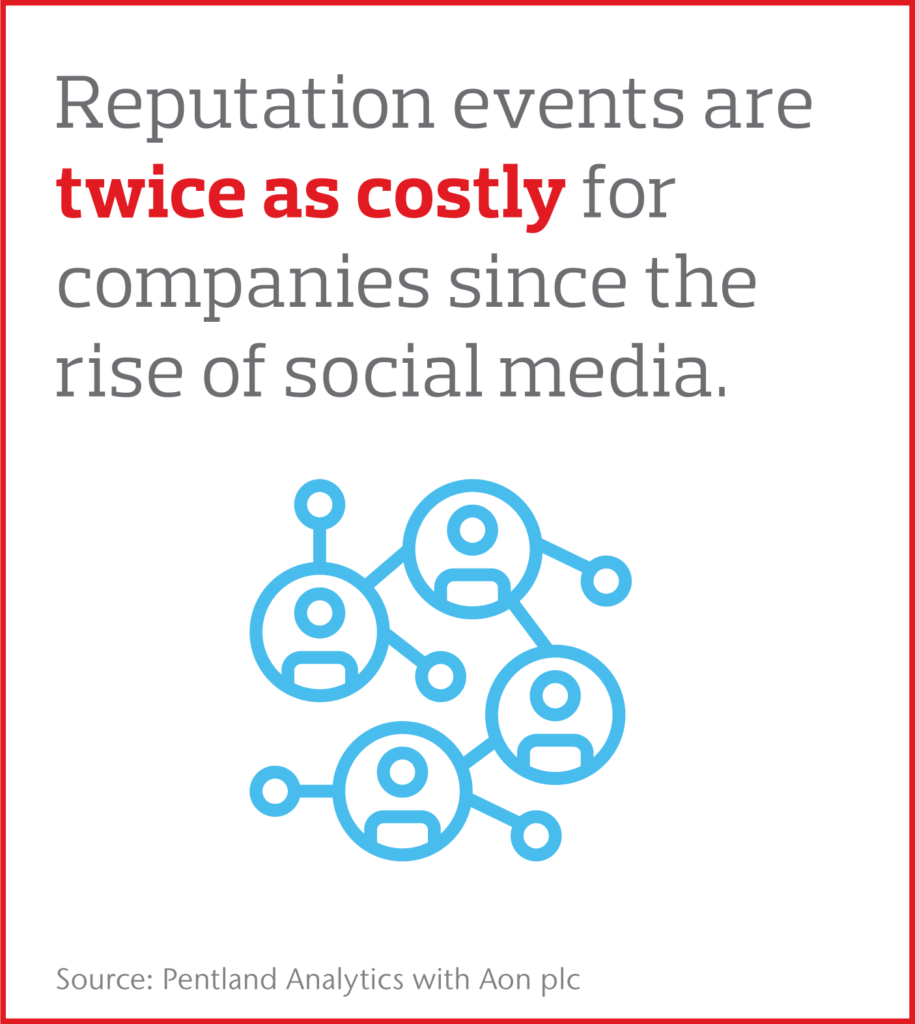
The Risk: Every business faces the risks of a reputation event, such as executive misconduct, product recalls and data breaches that jeopardize consumer privacy. Any one of these can affect the company’s brand perceptions and carries significant financial consequences. Furthermore, a nonstop news cycle and a world connected by social media combine to threaten organizations with long-term reputation and brand damage.
Consideration:
- Leaders considering reputation risk part of their corporate strategy should proactively create response plans for quickly addressing the public should a reputation event occur.
3. Accelerated Rates Of Change In Market Factors
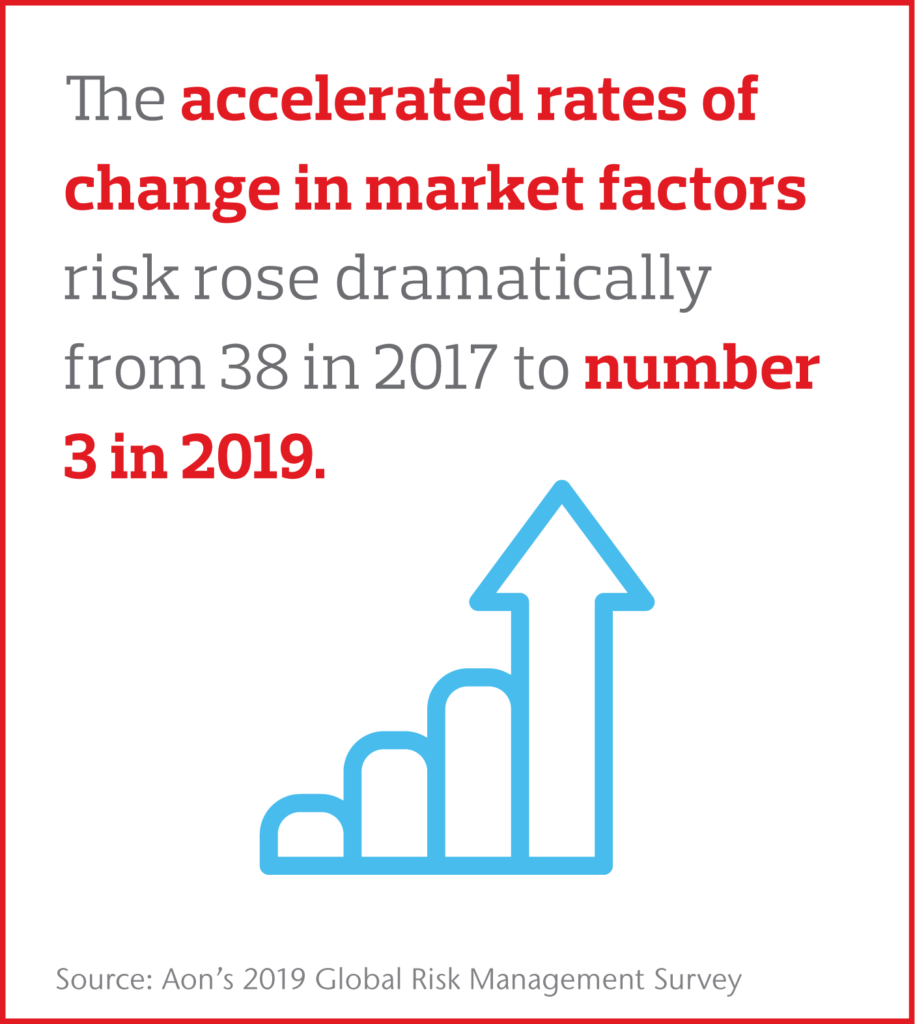
The Risk: Escalating global trade tensions and Brexit uncertainty, to name just two factors, can quickly change market conditions in ways businesses might not anticipate. And the emergence of disruptive technologies, meanwhile, can suddenly threaten existing business models.
Considerations:
- Business leaders should consider early-warning systems to identify potential market factor risks.
- Scenario planning can help companies determine risk tolerance levels and set up appropriate risk management steps – for example, diversifying supply chains, developing appropriate risk transfer strategies and reviewing and adjusting security protocols.
4. Business Interruption
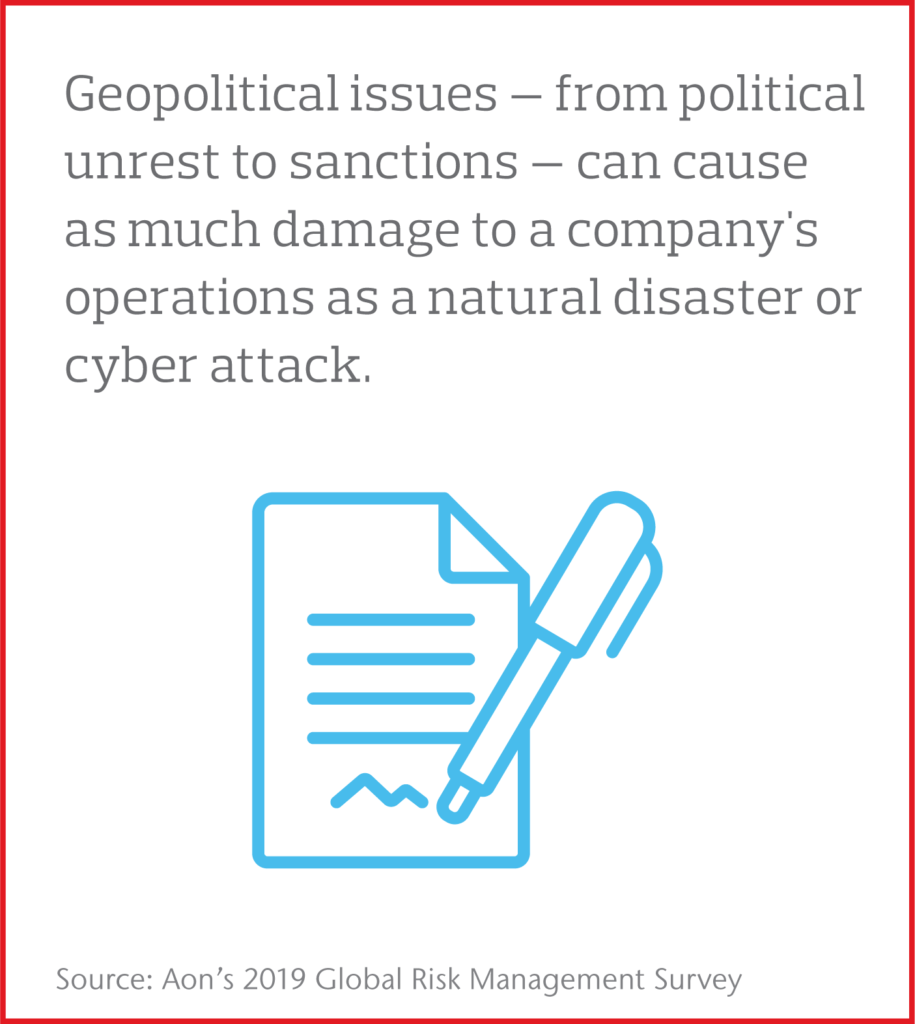
The Risk: Man-made disruptions (such as acts of terrorism, civil unrest or cyber attacks) or natural disasters (such as hurricanes, earthquakes, wildfires or floods) both disrupt business operations. Whether the damages are physical in the case of natural disasters or nonphysical as in the case of cyber, the financial losses stemming from such interruptions can be significant.
Considerations:
- Leaders need to identify areas of vulnerability from external forces that could disrupt operations and extent of potential losses, as well as the probability of an occurrence.
- Organizations should consider proactive steps (including risk engineering, risk financing and change management) to handle business interruption risks.
5. Increasing Competition
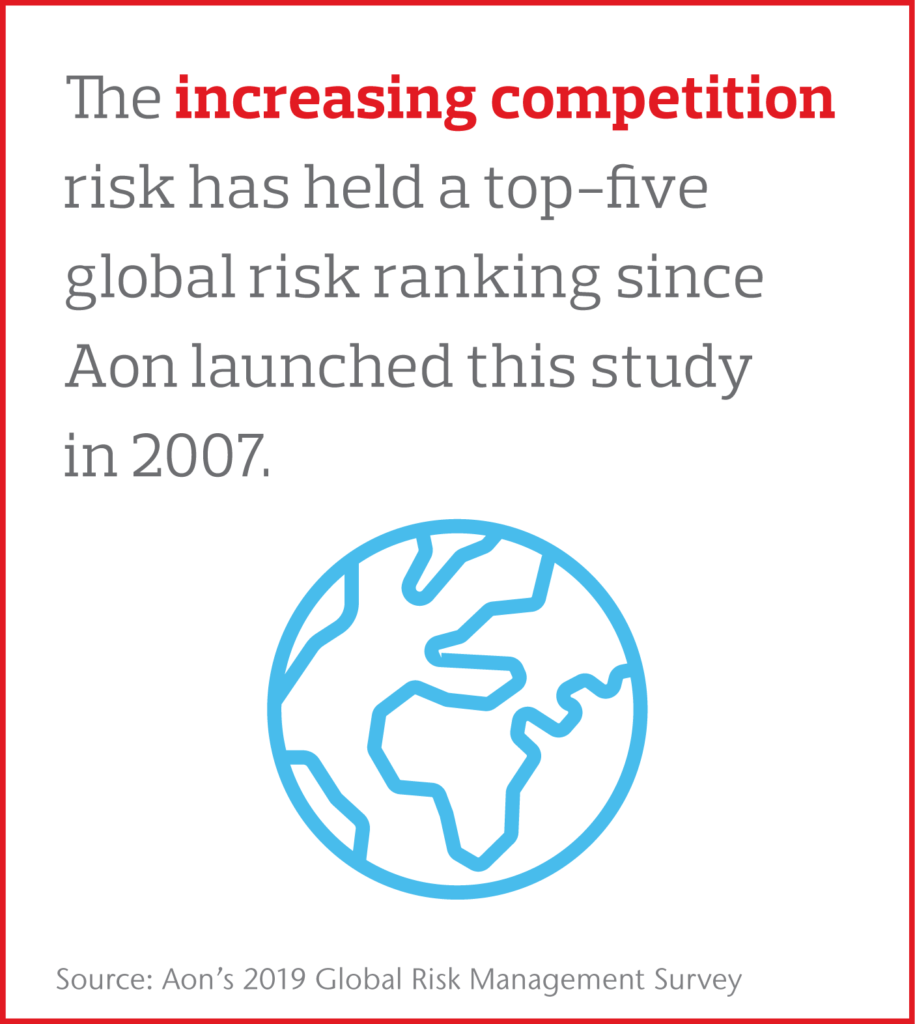
The Risk: Across industries, the way companies do business is rapidly changing. Disruptive technologies within the Internet of Things (IoT) and Industry 4.0 along with the rise of the sharing economy are among the recent factors affecting businesses.
Considerations:
- Organizations need to assess the talent needed to progress their business strategies. As new models emerge, a company’s talent needs will continue to evolve.
- Data and analytics – both internal and external – are essential tools to help businesses spot trends and gain a competitive edge.
6. Cyber Attack/Data Breach
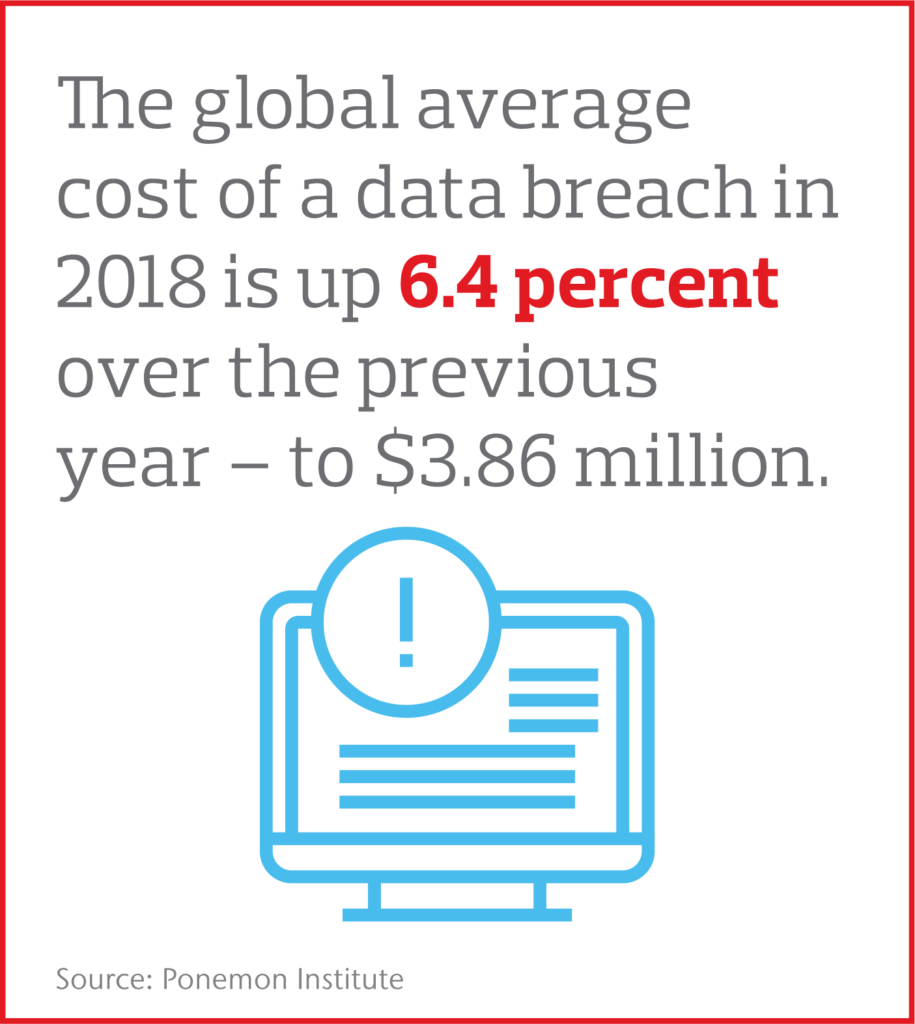
The Risk: Every organization is vulnerable to cyber risk, and industries relying heavily on digital technology to increase efficiency and competitiveness are in particular danger. According to the Ponemon Institute, in 2018 the global average cost of a data breach increased 6.4 percent to $3.86 million.
Considerations:
- Every level of an organization must understand the potential impact of a cyber attack and data breach and then work cross-functionally to address those risks.
- Businesses should consider adopting a comprehensive approach to cyber threats to continually assess their risk profiles, address vulnerabilities and proactively fortify cyber defenses.
7. Commodity Price Risk
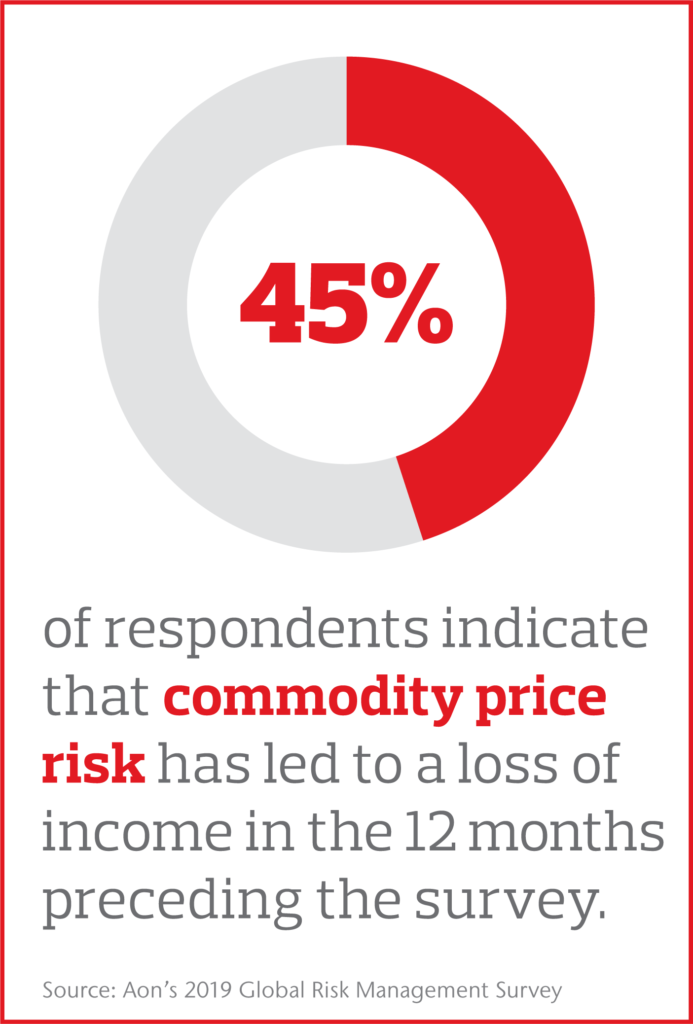
The Risk: Commodity prices can have a direct effect on almost every industry. Volatility in commodity markets is not unusual, but recent events have heightened concerns about commodity price risk. Trade wars and political instability in various parts of the world, financial market pressures in some emerging economies and even extreme weather conditions – as well as growing U.S. interest rates and an increase in the value of the dollar – have affected commodity markets, according to the World Bank.
Considerations:
- A long-term strategy to commodity pricing could aid planning purchases, avoiding situations that force a company to make large purchases at unknown prices.
- An understanding of how commodity costs affect other areas of the business can help companies assess whether supply chain and business interruption exposures are linked to commodity price fluctuations.
8. Cash Flow/Liquidity Risk
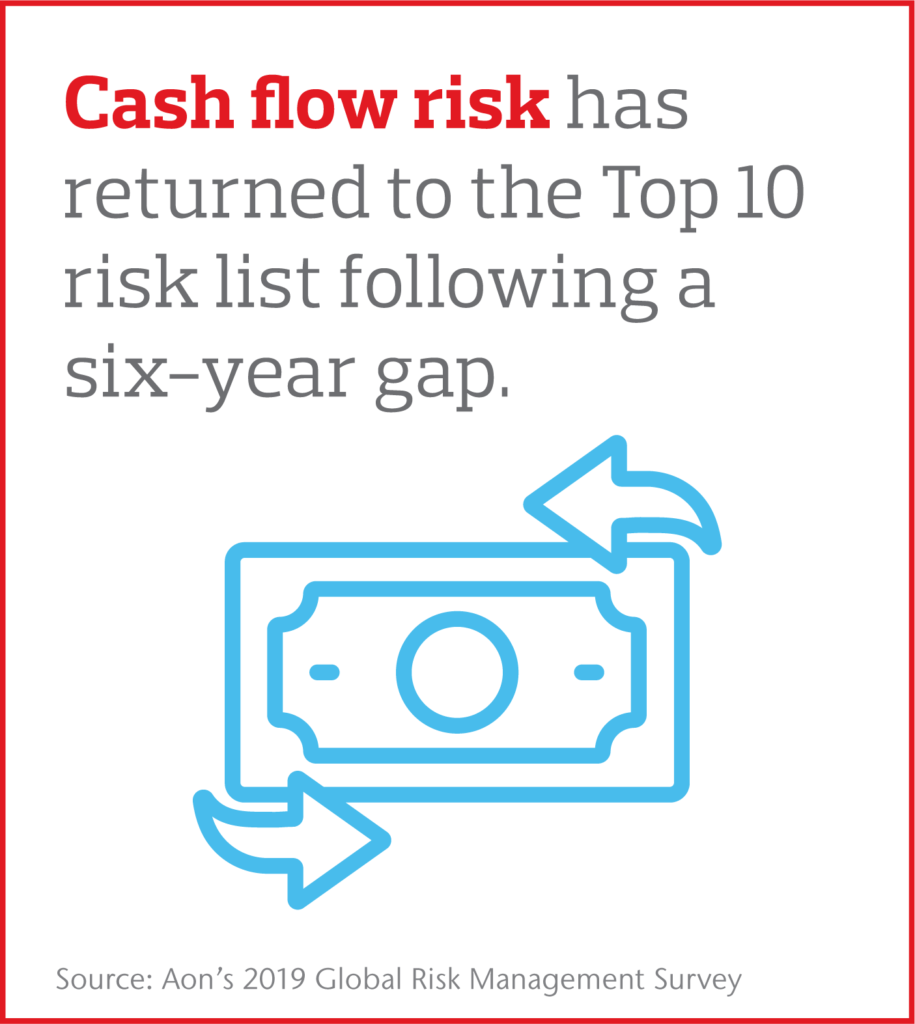
The Risk: An event impairing an organization’s cash flow or liquidity can leave the business unable to meet short- or intermediate-term obligations. Cash flow risk can be attributed to economic uncertainty and financial market volatility. But it also can be associated with other risks among the top 10, including economic slowdown and slow recovery and commodity price fluctuations.
Considerations:
- Industry experts recommend that companies concerned about cash flow risk should seek to monitor and maximize their cash positions.
- Organizations should also implement controlled cash management systems; either decrease or pause spending, instead focusing on cash inflow; diminish working capital; and attempt to improve their financial structures and funding options.
9. Failure To Innovate/Meet Consumer Needs
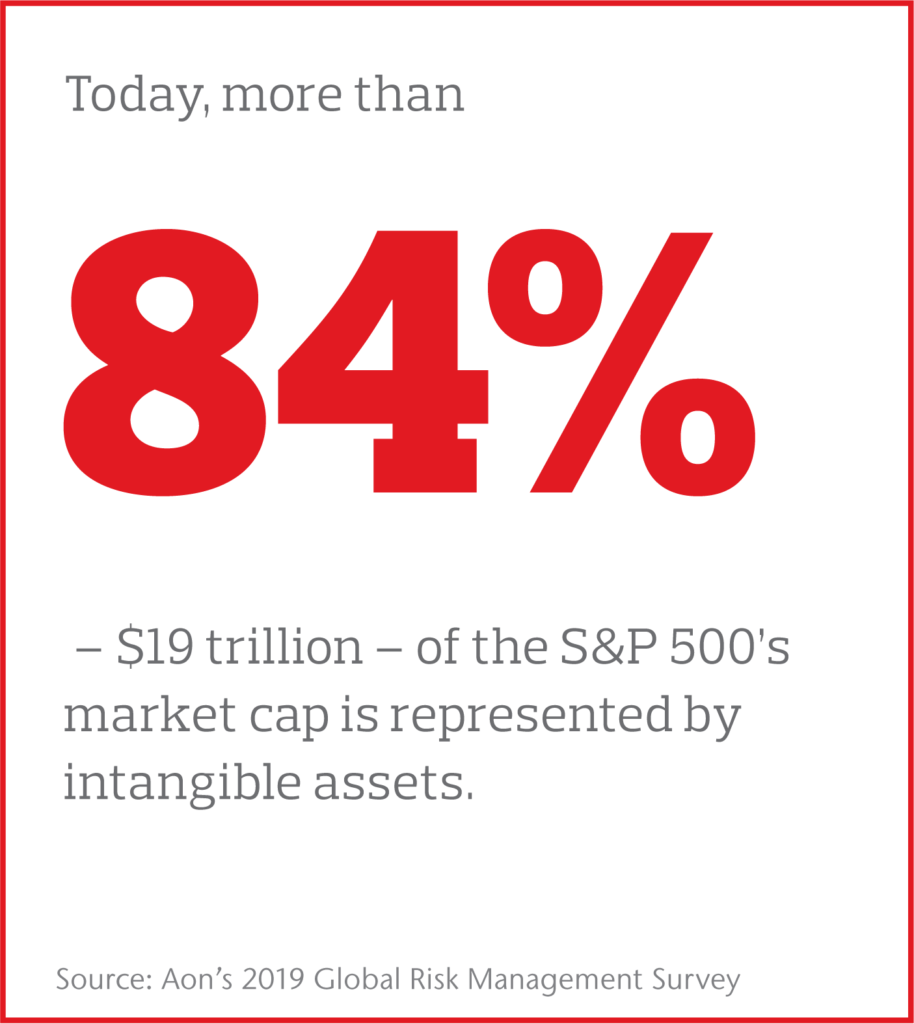
The Risk: Whether using a ride-hailing app or asking a digital assistant to turn on the lights at home, consumers have quickly adopted tech-empowered solutions. Innovation, therefore, is a necessity if businesses are to remain relevant and competitive.
Considerations:
- Data and analytics could improve organizations’ understanding of consumer needs and provide perspective on how to shift their business model to keep up with consumers’ demands.
- Innovation found in smaller, incremental changes – such as creating operational efficiencies, finding new ways to serve customers or even creating new solutions to address more traditional risks – is equally as important as the headline-making transformative technologies.
10. Regulatory/Legislative Changes
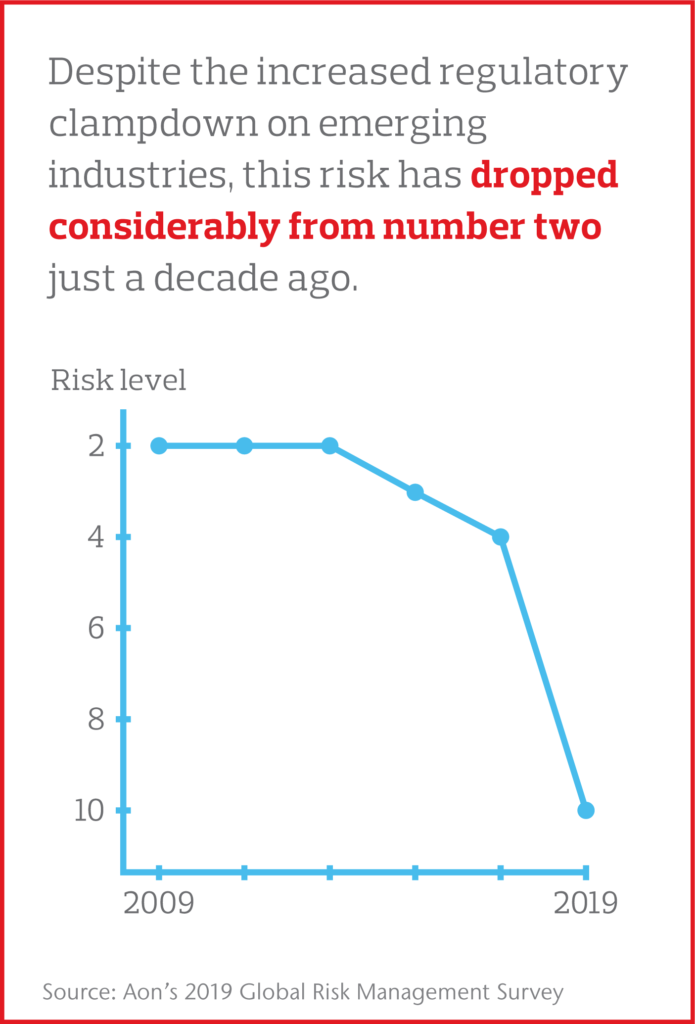
The Risk: An uncertain or complex regulatory framework can challenge an organization’s ability to do business. Many industries face strict regulations for safety, environmental standards and price reporting, but new regulatory efforts in emerging areas (such as data privacy) are affecting every business.
Considerations:
- Businesses should consider emerging and evolving regulations in their business strategies, creating frameworks to respond quickly to changes.
- Leaders can look to mandatory compliance as a business enabler, one that can possibly be viewed as a competitive advantage over peers that swiftly or effectively addresses such changes.
Maximizing Performance In A Volatile Risk Landscape
Balancing current market opportunities with strategic risk-taking will best position organizations to succeed in the evolving risk environment.
And creative solutions to challenges will likely come from all parts of an organization. “The most effective organizations will approach challenges holistically, involving leaders throughout the organization to provide their unique viewpoints and expertise and combining this insight with sector specific data and predictive analytics to support decision-making about investment in risk management,” notes Case.
See how risks have evolved since Aon’s 2017 Global Risk Management Survey.
* Participant profiles in Aon’s 2019 Global Risk Management Survey encompassed small (valued below $1 billion), medium ($1 billion to $15 billion) and large (more than $15 billion) organizations, including respondents from privately owned companies, public organizations and government and nonprofit entities.
The post 2019’s Top 10 Risks: New Risks Emerge, Established Risks Evolve appeared first on The One Brief.
